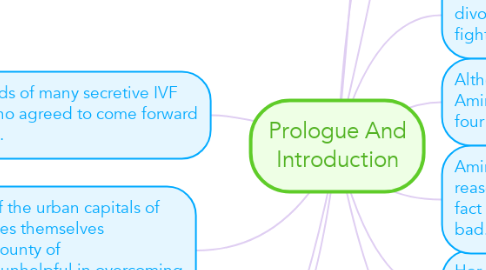Prologue And Introduction
by Katherine Ruenes


1. Amira considered IVF when her husband preferred to look into adoption.
2. Inhorn uses the words of many secretive IVF patients in Egypt who agreed to come forward and tell their stories.
3. "Although IVF centers now flourish in most of the urban capitals of the Middle East, the reproductive technologies themselves representing, for the infertile, the potential bounty of globalization-are often either inaccessible or unhelpful in overcoming infertility."
4. For women, Egyptian cultural responses to the use of these Western generated technologies include indigenous theories of procreation that reject the notion of women producing "eggs" for in vitro fertilization.
4.1. I think women not being able to have children or needing help in doing are stigmatized as in not doing what they were put on this earth to do and that is procreate. It is just as men who have low sperm count or are sterile.
4.1.1. Infertility is one of the most stigmatizing health and social conditions for women, in societies ranging from China and India in the "East" to sub-Sahara Africa and Latin America.
5. There was a substantial size of the infertile population in Egypt. In 1986 Egypt opened its first IVF center.
5.1. "The Major Paradox of infertility is that its prevalence is often greatest in those areas of the world where fertility is also the highest. The phenomenon of so called barrenness amid plenty."
6. Official adoption, where an orphaned child becomes a legal son or daughter through adoption of the parents' and takes the father's surname as well as their acknowledged heir, is not recognized by islamic law.
6.1. Resistance to adoption often has less to do with religion than with numerous deep-seated cultural anxieties and biasing Egyptians of all social classes against this practice.
6.1.1. They include fears such as that illegitimate children who could turn out to be of "bad blood", birth parents might come and reclaim their child, erotic relationship between family and many more.
